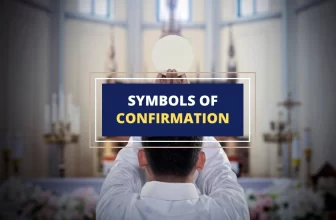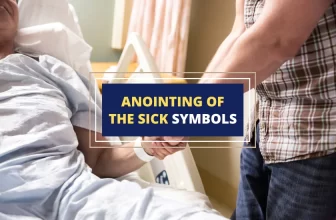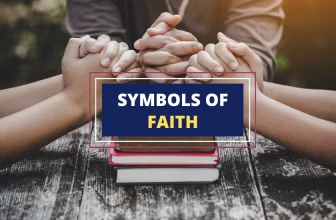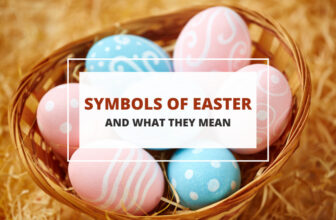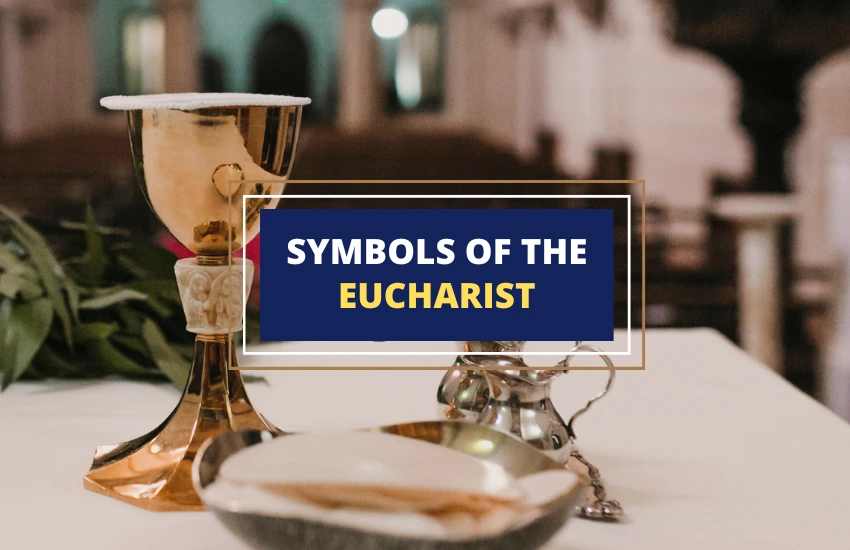
Table of Contents
The Eucharist, also known as Holy Communion, is one of the most important sacraments in the Christian faith.
This sacred ritual involves the consumption of bread and wine, which are believed to represent the body and blood of Jesus Christ.
But have you ever stopped to consider the rich symbolism behind these elements?
From the bread and wine to the chalice and the Lamb of God, the symbols of the Eucharist are profoundly significant and reflective of the essence of the Christian faith.
Each element holds its meaning, giving us a deeper understanding of the sacrament’s significance.
What is the Eucharist?
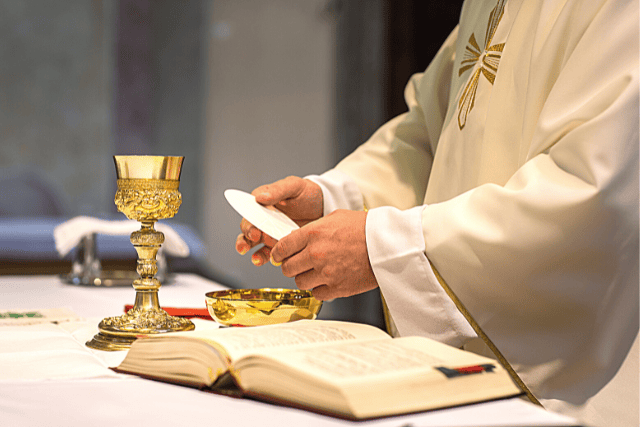
The Eucharist is a Christian sacrament that commemorates the Last Supper of Jesus Christ with his disciples.
During the Last Supper, Jesus took bread and wine and gave them to his disciples, saying they were his body and blood. Christians believe that through the sacrament of the Eucharist, they participate in a sacred ritual that connects them to the divine and each other.
In the Catholic Church and some other Christian denominations, the Eucharist is also known as Holy Communion. It involves the consumption of bread and wine consecrated by a priest during the Mass.
Christians believe that by consuming the bread and wine, they receive the real presence of Jesus Christ and are spiritually nourished and transformed.
The Eucharist is one of the most important sacraments in the Christian faith, central to Christian worship and practice.
It represents the ongoing presence of Christ in the world. It serves as a powerful symbol of Christian unity and fellowship.
Symbols of the Eucharist and Their Significance
At the heart of the Eucharistic sacrament lies a rich list of symbols representing critical aspects of Christian faith and practice.
From the bread and wine to the chalice and the host, each of these symbols carries a unique meaning and significance that enhances the overall experience of the sacrament.
1. Bread and Wine
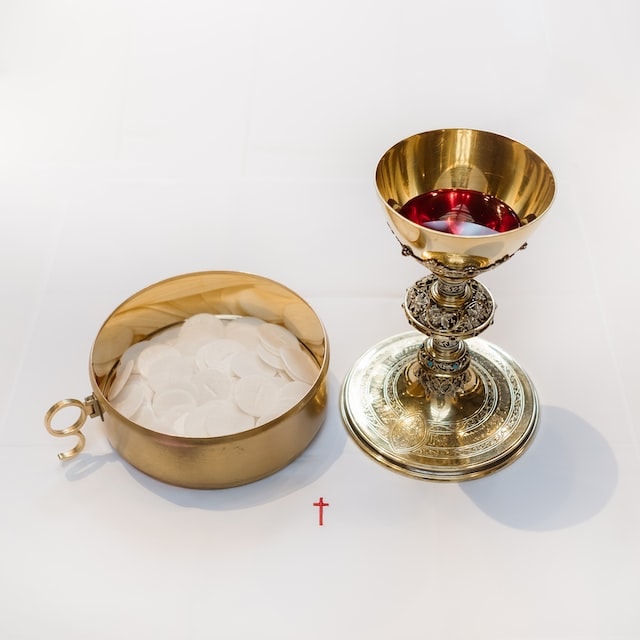
The symbols of bread and wine are central to the Eucharist, representing the body and blood of Jesus Christ, respectively.
According to Christian tradition, Jesus took bread and wine during the Last Supper, blessed them, and gave them to his disciples, telling them to “do this in memory of me.”
The bread used in the Eucharist is usually unleavened, standing for the purity and sinlessness of Christ. It is typically a small, round wafer consecrated by a priest during the Mass.
It is also known as the Eucharistic host. The wine is usually red, poured into a chalice, and blessed during the Mass. It represents the blood that Jesus shed for the redemption of humanity.
By consuming the bread and wine during the Eucharist, Christians believe they participate in a sacred, transformative ritual that brings them closer to God and each other.
The symbols of bread and wine have been used in the Eucharist for centuries. They continue to hold a deep spiritual significance for Christians around the world.
2. Wheat and Grapes
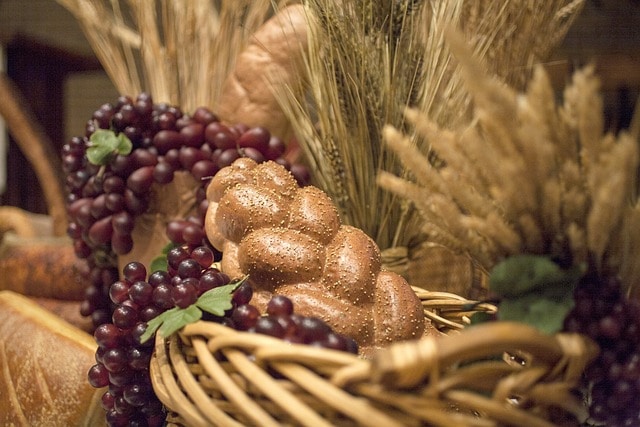
Wheat and grapes are two important symbols in the Eucharist, representing the bread and wine consecrated during the celebration.
The use of these symbols has its roots in the ancient Jewish practice of offering bread and wine as a sacrifice to God.
Wheat is often seen as a symbol of nourishment and sustenance, representing the bread consecrated during the Eucharist. Grapes, on the other hand, are a symbol of abundance and joy.
The use of wheat and grapes in the Eucharist has its roots in the ancient Jewish practice of offering bread as a sacrifice to God.
Together, wheat and grapes represent the abundance and generosity of God’s love and the sacrifice Christ made for humanity.
Using these symbols in the Eucharist is a powerful reminder of Christ’s central role in the Christian faith and the nourishment and sustenance he provides for his followers.
3. Chalice
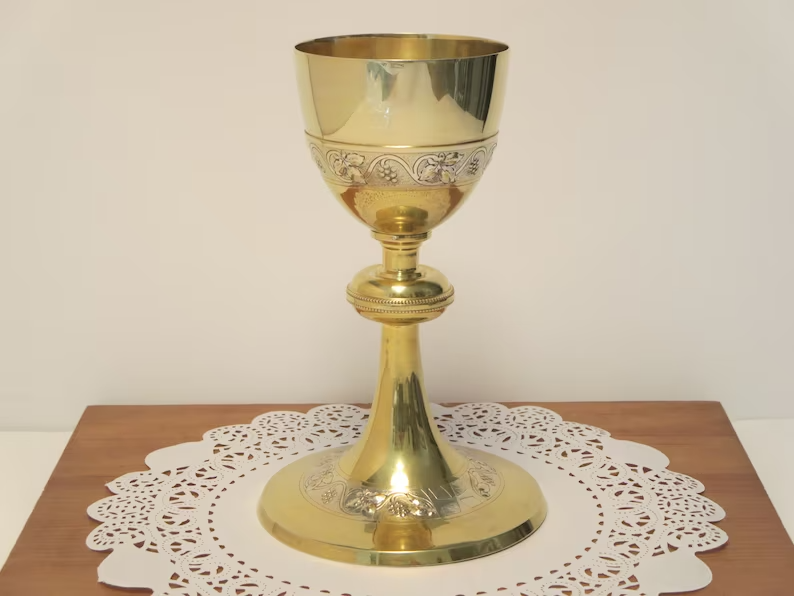
The chalice is an important Eucharistic symbol representing Jesus’ cup in the Last Supper to serve wine to his disciples.
It is a sacred vessel that holds the wine that is consecrated during the Eucharistic celebration and symbolizes the blood of Christ shed for the salvation of humanity.
The use of a chalice during the Eucharist can be traced back to the early days of Christianity, and it continues to be an integral part of the ritual.
The chalice is often made of precious metals and adorned with intricate designs, further emphasizing its significance as a symbol of divine presence.
4. Paten
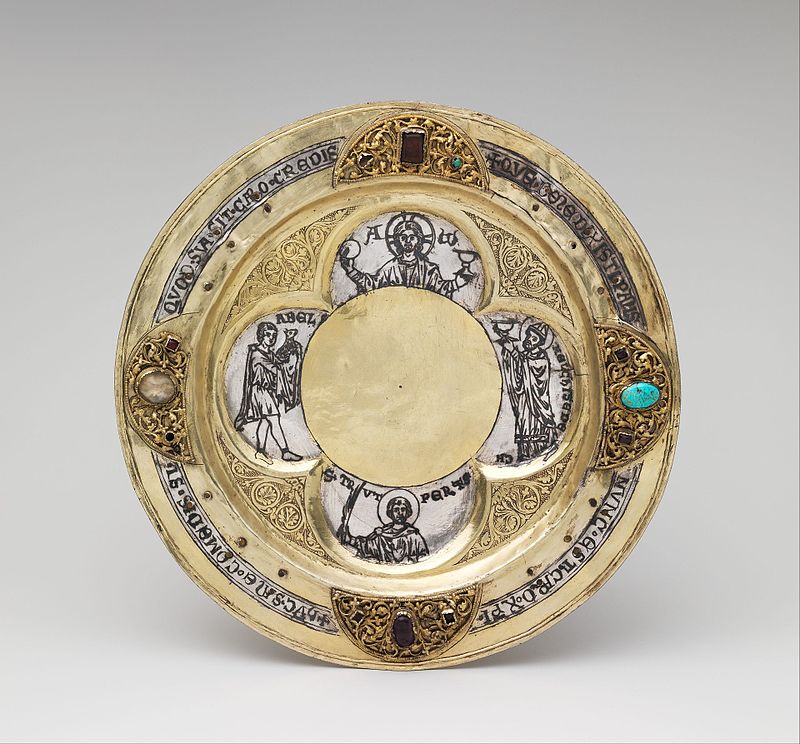
The paten is an important Eucharistic symbol that holds the consecrated bread or host during the Mass.
It is often made of gold or silver and may be adorned with intricate designs, emphasizing its sacred significance. In the early days of Christianity, the paten was often made of earthenware or glass.
Still, as the ritual of the Eucharist developed, it became more common to use metal patens.
“Paten” comes from the Latin word “patina,” which means a shallow dish or plate. During the Middle Ages, patens were often elaborately decorated; some were even set with precious stones.
Today, the paten remains an important symbol of the Eucharist, representing the bread that was broken and shared by Jesus and his disciples during the Last Supper.
The priest reminds us of Christ’s sacrifice by offering the bread on the paten. He invites us to share the divine love he exemplified through his life and teachings.
5. Lamb of God
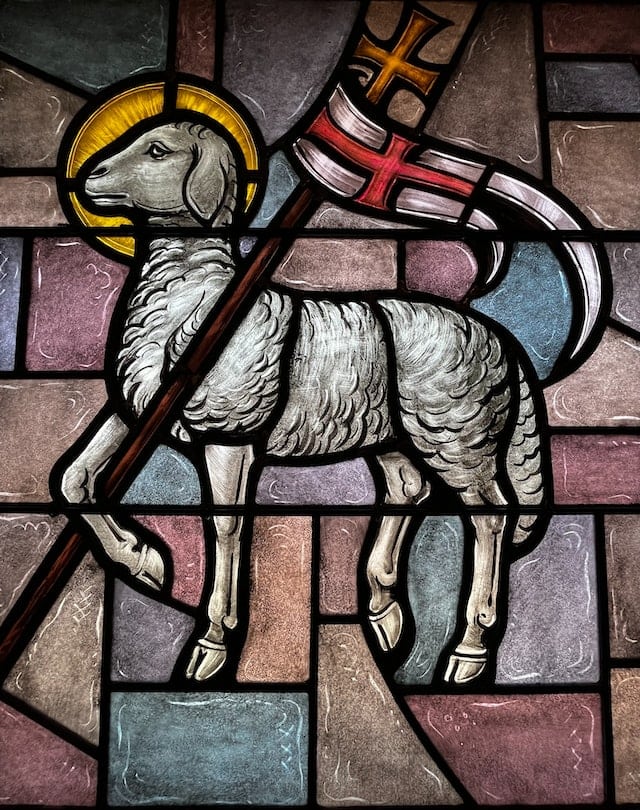
The Lamb of God represents Jesus Christ as the sacrificial lamb who gave his life for the salvation of humanity.
The symbol has its roots in the Old Testament, where the Passover lamb was sacrificed to atone for sins and gain God’s favor.
In the New Testament, Jesus is often referred to as the “Lamb of God,” His sacrifice on the cross is seen as the ultimate sacrifice that brings salvation to all who believe in him.
During the Eucharistic celebration, the priest elevates the host and the chalice, proclaiming, “Behold the Lamb of God, who takes away the sins of the world.” This proclamation highlights Jesus’s central role in the Eucharist and reminds us of his sacrifice on the cross.
The Lamb of God symbol is often depicted in religious art, showing a lamb with a cross or carrying a banner with a cross. The emblem has become a powerful reminder of Jesus’s love and sacrifice for humanity. It is an integral part of the Eucharistic ritual.
6. Altar
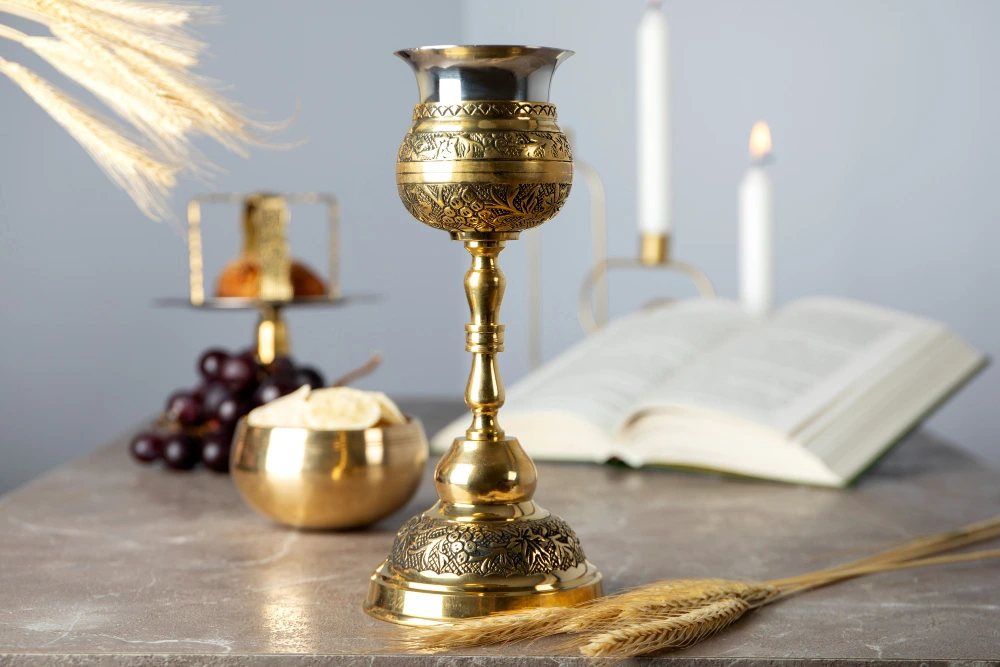
The altar is a central symbol in the celebration of the Eucharist, representing the table of the Lord where the bread and wine are consecrated and offered to God.
It has been a part of Christian worship since the earliest days of the Church, and its design and placement vary among different denominations and cultures.
In the Catholic tradition, the altar is typically placed at the center of the sanctuary, facing eastward to symbolize the rising of the sun and the hope of the resurrection.
It is often decorated with candles, flowers, and other religious symbols, emphasizing its sacred nature and the importance of the Eucharist in the life of the Church.
7. Paschal Candle
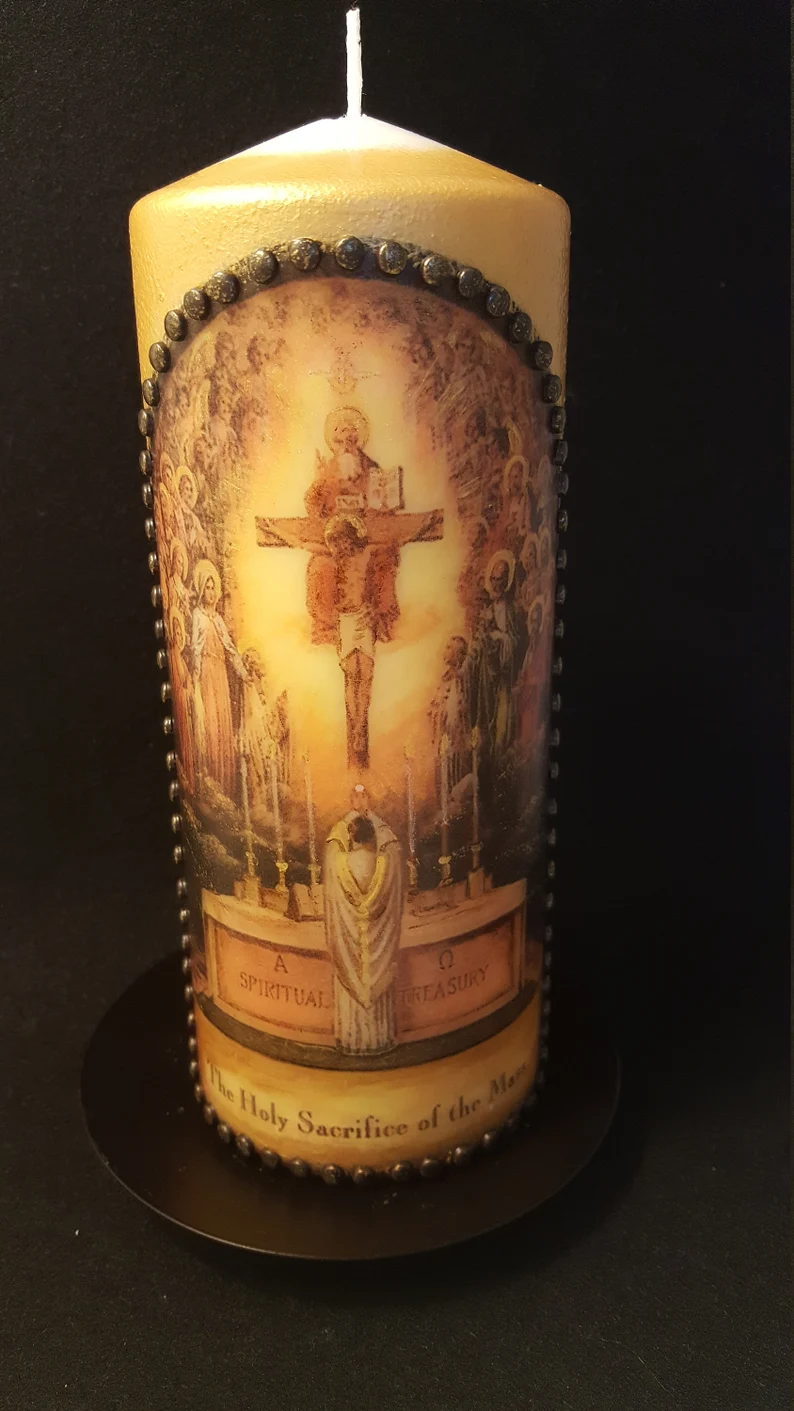
The Paschal candle is a prominent symbol in celebrating the Eucharist, particularly in the Catholic and Anglican traditions. It is a tall candle, often decorated with images of Christ, and is lit at the beginning of the Easter Vigil service.
The lighting of the Paschal candle represents the resurrection of Christ and the triumph of light over darkness.
During the Eucharist, the Paschal candle is usually placed near the altar and remains lit throughout the service. Its presence serves as a reminder of the sacrifice of Christ and the hope of salvation that is offered through his death and resurrection.
The Paschal candle also represents the presence of Christ among his people. It serves as a symbol of unity and community.
Wrapping Up
The symbols used in the Eucharist reflect the Christian faith and remind us of Christ’s love. They also invite us to unite and deepen our understanding of the significance of this sacred sacrament.
By exploring the symbolism behind these elements, we can appreciate the power and beauty of the Eucharist and how it helps to connect us to the divine.
Similar Articles:
Top 14 Sacred Symbols and Their Meanings
10 Symbols of Confirmation and What They Mean
11 Powerful Symbols of Baptism and What They Mean
8 Powerful Symbols of Lent: A Journey of Faith and Reflection




